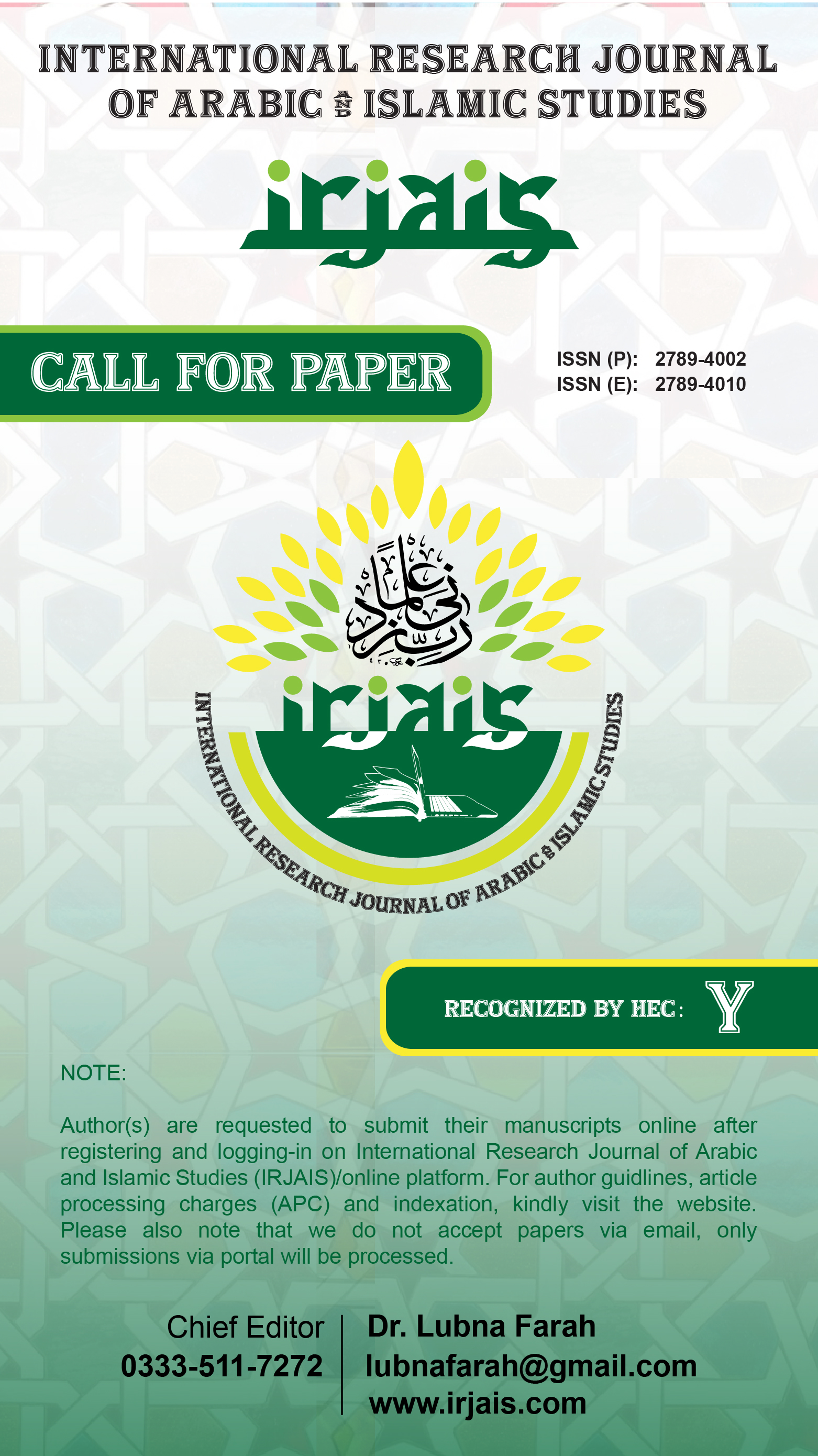ماقبل ارتحال موسی یہودی قوم کے احوال قرآن و عہد نامہ قدیم کا تقابلی جائزہ
The Comparative Study of the Conditions of the Jewish Nation Before the Departure of Moses: According to the Qur'an and the Old Testament
Keywords:
Bani Israel, Prophet Musa, Moses, Quran, Bible, socio-political conditions, religious challenges, comparative analysisAbstract
This study provides an analytical examination of the conditions faced by Bani Israel (the Children of Israel) during the era of Prophet Musa (Moses) (AS), utilizing both the Quran and the Bible as primary sources. It explores the socio-political, religious, and moral challenges that the Israelites encountered under the leadership of Prophet Musa. By comparing the narratives and details provided in the Quran and the Bible, the research highlights the similarities and differences in the depiction of Bani Israel’s journey from bondage in Egypt to their wanderings in the desert and eventual approach to the Promised Land. The study also delves into the lessons derived from their experiences, including their struggles with faith, obedience, and governance. Through this comparative analysis, the research aims to deepen the understanding of the historical and theological perspectives on Bani Israel's conditions, providing insights into the broader implications of their narrative in both Islamic and Judeo-Christian traditions.





